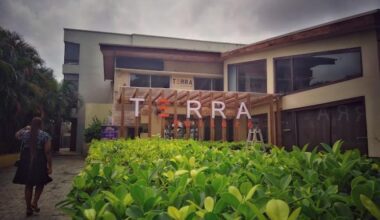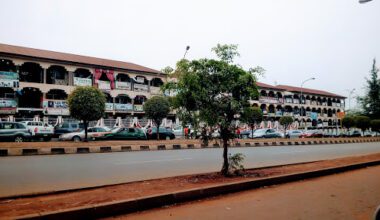In traditional and modern Yorùbá culture, numbers are not just for counting—they are deeply embedded in the language, history, trade, and worldview of the people. Especially in numismatics—whether dealing with cowries, coins, or modern money—the Yorùbá numerical system is both rich and complex.
Below is an extensive list of numbers 1 through 100, focusing on how they are traditionally used in counting currency, such as cowries (òwọ̀), coins, or symbolic economic expressions.
Basic Counting (1–10)
These numbers form the foundation of the Yorùbá numbering system:
- Ení or Ọ̀kan – One
- Èjì or Eéjì – Two
- Ẹta or Ẹẹ́ta – Three
- Ẹrin, Ẹ̀rin, or Ẹẹ́rin – Four
- Àrún or Aárùn – Five
- Ẹfà or Ẹẹ́fà – Six
- Èje or Eéje – Seven
- Ẹjọ, Ẹ̀jọ, or Ẹẹ́jọ – Eight
- Ẹsan, Ẹ̀sán, or Ẹẹ́sàn – Nine
- Ẹwà, Ẹ̀wá, or Ẹẹ́wà – Ten
Teens (11–19) – Additions to Ten
These numbers combine 10 (Ẹwà) with 1–9:
11. Ọ̀kanlá, Oókànlá – 10 + 1
12. Èjìlá, Eéjìlá – 10 + 2
13. Ẹtàlá, Ẹẹ́tàlá – 10 + 3
14. Ẹ̀rìnlá, Ẹẹ́rìnlá – 10 + 4
15. Ẹẹ́dógún – 10 + 5
16. Ẹẹ́rìndílógún – 4 from 20 (16 = 20 – 4)
17. Eétàdílógún – 3 from 20
18. Eéjìdílógún – 2 from 20
19. Oókàndílógún – 1 from 20
Multiples of 20 – Traditional Base-20 System
The Yorùbá system traditionally groups by twenties (ogún), which is a cultural base-20 system rather than the common base-10:
20. Ogún, Okòó, Ọkẹ̀ Òwọ̀ – Twenty
21. Ọ̀kanlélógún – 20 + 1
22–29 follow the same additive pattern.
30. Ọgbọ̀n, Ọgbọn òwọ̀ – Thirty
31–39 use: Ọkanlelọgbọn, Ejilelọgbọn, etc.
40. Ogójì – Two twenties
50. Àádọ́ta – Fifty
60. Ọgọ́ta – Three twenties
70. Àádọ́rin – Seventy
80. Ọgọ́rin – Four twenties
90. Àádọ́rùn – Ninety
100. Ọgọ́rùn, Ọgọrun Òwọ̀ – Five twenties
Mid-Decades and Subtractive Counting (15, 16–19, etc.)
Yorùbá numerals use a subtractive pattern from the nearest multiple of 20:
- 15 → Ẹẹ́dógún = 5 before 20
- 16 → Ẹẹ́rìndílógún = 4 before 20
- 19 → Oókàndílógún = 1 before 20
- 45 → Àárùndíládọ́ta = 5 before 50
- 59 → Oókàndílọgọta = 1 before 60
- 99 → Oókàndílọgọrun = 1 before 100
This subtractive logic shows a unique cultural nuance where values are expressed in relation to a higher unit rather than simple addition.
Cultural Notes on Use in Currency
In historical Yoruba markets:
The terms like “Ogún mẹta” (three twenties) or “Ogún márùn” (five twenties) were commonly used in counting large sums.
Cowries (ìrọ̀) were a primary currency, counted using this base-20 system.
“Ọkẹ̀ òwọ̀” (hundreds or bundles of money) were often calculated using multiples of twenty, particularly in trade, marriage bride price, or religious offerings.
1 to 100 in Yoruba
1-Ení or ọ̀kan (for numismatics or currencies like cowries or coins).
2-È jì or Eéji (for numismatics or currencies like cowries or coins).
3-Ẹta or ẹẹ́ta (for numismatics or currencies like cowries or coins, same pattern till 19).
4-Ẹrin, ẹ̀rin or ẹẹ́rin
5-Àrún or aárùn
6-Ẹfà or ẹẹ́fà
7-Èje or eéje
8-Ẹjọ, ẹ̀jọ or ẹẹ́jọ
9-Ẹsan, ẹ̀sán or ẹẹ́sàn
10-Ẹwa,ẹ̀wá or ẹẹ́wà
11-Ọkanla, ọ̀kanlá, oókànlá
12-Ejila, èjìlá, eéjìlá
13-Ẹtala, ẹ̀talá, ẹẹ́talá
14-Ẹrinla, ẹ̀rinlá, ẹẹ́rìnlá
15-Ẹdogun (Ẹedogun, ẹ́ẹdógún)
16-Ẹrindinlogun, ẹẹ́rìndílógún
17-Ẹtadinlogun, eétàdílógún
18-Ejindinlogun, eéjìdílógún
19-Ọkandinlogun, oókàndílógún
20-Ogun, ogún, okòó or Okowo (ọkẹ owo for numismatics or currencies like cowries or coins).
21-Ọkanlelogun
22-Ejilelogun
23-Ẹtalelogun
24-Ẹrinlelogun
25-Ẹdọgbọn, ẹ́ẹdọ́gbọ̀n
26-Ẹrindinlọgbọn
27-Ẹtadinlọgbọn
28-Ejidinlọgbọn
29-Ọkandinlọgbọn
30-Ọgbọn, ọgbọ̀n, ọɡbọ̀n ǒ or Ọgbọnwo (Ọgbọn owo for numismatics or currencies like cowries or coins )
31-Ọkanlelọgbọn
32-Ejilelọgbọn
33-Ẹtalelọgbọn
34-Ẹrinlelọgbọn
35-Arundinlogoji, aárùndílogójì
36-Ẹrindinlogoji
37-Ẹtadinlogoji
38-Ejidinlogoji
39-Ọkandinlogoji
40-Ogoji, ogójì, ojì (Ooji, Ogun meji, two twenties)
41-Ọkanlelogoji
42-Ejilelogoji
43-Ẹtalelogoji
44-Ẹrinlelogoji
45-Arundinladọta
46-Ẹrindinladọta
47-Ẹtadinladọta
48-Ejidinladọta
49-Ọkandinladọta
50-Adọta (aadọta), àádọ́ta
51-Ọkanleladọta
52-Ejileladọta
53-Ẹtaleladọta
54-Ẹrinleladọta
55-Arundinlọgọta
56-Ẹrindinlọgọta
57-Ẹtadinlọgọta
58-Ejidinlọgọta
59-Ọkandinlọgọta
60-Ọgọta, ọgọ́ta, ọta (ogun mẹta, three twenties)
61-Ọkanlelọgọta
62-Ejilelọgọta
63-Ẹtalelọgọta
64-Ẹrinlelọgọta
65-Arundiladọrin
70-Adọrin (Aadọrin), àádọ́rin
71-Ọkanleladọrin
72-Ejileladọrin
73-Ẹtaleladọrin
74-Ẹrinleladọrin
75-Arundilọgọrin
76-Ẹrindilọgọrin
77-Ẹtadilọgọrin
78-Ejidilọgọrin
79-Ọkandilọgọrin
80-Ọgọrin (Ogun mẹrin, four twenties), ọgọ́rin, ọrin
81-Ọkanlelọgọrin
82-Ejilelọgọrin
83-Ẹtalelọgọrin
84-Ẹrinlelọgọrin
85-Arundiladọrun
86-Ẹrindiladọrun
87-Ẹtadiladọrun
88-Ejidiladọrun
89-Ọkandiladọrun
90-Adọrun (Aadọrun), àádọ́rùn
91-Ọkanleladọrun
92-Ejileladọrun
93-Ẹtaleladọrun
94-Ẹrinleladọrun
95-Arundilọgọrun
96-Ẹrindilọgọrun
97-Ẹtadilọgọrun
98-Ejidilọgọrun
99-Ọkandilọgọrun
100-Ọgọrun (ogun marun, five twenties), ọgọ́rùn, ọrún
Conclusion
The Yorùbá numerical system is beautifully layered, blending arithmetic logic with rich cultural expression. Whether you’re a language learner, a researcher, a cultural enthusiast, or a numismatist, understanding this base-20 system offers deep insights into how the Yorùbá people relate to value, money, and trade.
If you’re working on translating, teaching, or preserving indigenous counting systems, the Yorùbá numerals serve as a brilliant model of how indigenous knowledge can thrive alongside modern economics.


